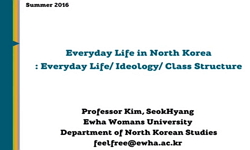In order to reduce the health inequalities within a society changes need to be made in broad health determinants and their distribution in the population. It has been expected that the Health impact assessment(HIA) and Healthy Cities can provide oppor...
http://chineseinput.net/에서 pinyin(병음)방식으로 중국어를 변환할 수 있습니다.
변환된 중국어를 복사하여 사용하시면 됩니다.
- 中文 을 입력하시려면 zhongwen을 입력하시고 space를누르시면됩니다.
- 北京 을 입력하시려면 beijing을 입력하시고 space를 누르시면 됩니다.


외국에서의 건강불평등 개선을 위한 노력: 건강영향평가, 건강도시 = Introduction of Health Impact Assessment and Health Cities as a Tool for Tackling Health Inequality
한글로보기https://www.riss.kr/link?id=A101437825
-
저자
유원섭 ; 고광욱 ; 김건엽 ; Yoo, Weon-Seob ; Koh, Kwang-Wook ; Kim, Keon-Yeop
- 발행기관
- 학술지명
- 권호사항
-
발행연도
2007
-
작성언어
Korean
- 주제어
-
등재정보
SCOPUS,KCI등재
-
자료형태
학술저널
- 발행기관 URL
-
수록면
439-446(8쪽)
-
KCI 피인용횟수
8
- DOI식별코드
- 제공처
- 소장기관
-
0
상세조회 -
0
다운로드
부가정보
다국어 초록 (Multilingual Abstract)
In order to reduce the health inequalities within a society changes need to be made in broad health determinants and their distribution in the population. It has been expected that the Health impact assessment(HIA) and Healthy Cities can provide opportunities and useful means for changing social policy and environment related with the broad health determinants in developed countries. HIA is any combination of procedures or methods by which a proposed 4P(policy, plan, program, project) may be judged as to the effects it may have on the health of a population. Healthy city is one that is continually creating and improving those physical and social environments and expanding those community resources which enable people to mutually support each other in performing all the functions of life and in developing to their maximum potential. In Korea, social and academic interest regarding the HIA and Healthy Cities has been growing recently but the need of HIA and Healthy Cities in the perspective of reducing health inequality was not introduced adequately. So we reviewed the basic concepts and methods of the HIA and Healthy Cities, and its possible contribution to reducing health inequalities. We concluded that though the concepts and methods of the HIA and Healthy Cities are relatively new and still in need of improvement, they will be useful in approaching the issue of health inequality in Korea.
참고문헌 (Reference)
1 AFHC, "Your Map to a Healthy City-For a World Full of Life" Manila: WPRO 2004
2 Kemm J, "What is HIA? Introduction and overview" Oxford: Oxford University Press 4-5, 2005
3 Mindell J, "What do need for robust, quantitative health impact assessment" 23 (23): 173-178, 2001
4 Earth Summit - Agenda 21, "United Nations Division for Sustainable Development" United Nations; 1993
5 Rose G, "The strategy of Preventive Medicine" Oxford University Press 51-52, 1993
6 Kemm J, "The development of HIA" Oxford: Oxford University Press 16-17, 2005
7 Scott-Samuel A, "The Merseyside Guidelines for Health Impact Assessment, 2nd ed." Liverpool: International Health Impact Assessment Consortium 2001
8 Awofeso N, "The Healthy Cities approachreflections on a framework for improving global health" 81 (81): 222-223, 2003
9 Kickbusch I, "The Contribution of the World Health Organization to a new public health and health promotion" 93 (93): 383-388, 2003
10 Whitehead M, "Tackling Inequalities: A Review of Policy Initiative" 22-52, 1995
1 AFHC, "Your Map to a Healthy City-For a World Full of Life" Manila: WPRO 2004
2 Kemm J, "What is HIA? Introduction and overview" Oxford: Oxford University Press 4-5, 2005
3 Mindell J, "What do need for robust, quantitative health impact assessment" 23 (23): 173-178, 2001
4 Earth Summit - Agenda 21, "United Nations Division for Sustainable Development" United Nations; 1993
5 Rose G, "The strategy of Preventive Medicine" Oxford University Press 51-52, 1993
6 Kemm J, "The development of HIA" Oxford: Oxford University Press 16-17, 2005
7 Scott-Samuel A, "The Merseyside Guidelines for Health Impact Assessment, 2nd ed." Liverpool: International Health Impact Assessment Consortium 2001
8 Awofeso N, "The Healthy Cities approachreflections on a framework for improving global health" 81 (81): 222-223, 2003
9 Kickbusch I, "The Contribution of the World Health Organization to a new public health and health promotion" 93 (93): 383-388, 2003
10 Whitehead M, "Tackling Inequalities: A Review of Policy Initiative" 22-52, 1995
11 Price C, "Sustainable Development and Health: Concepts, Principles and Framework for Action for European Cities and Towns" Copenhagen: WHO Regional Office for Europe 1997
12 den Broeder L, "Soft data, hard effects. Strategies for effective policy on health impact assessment-an example from Netherlands" 81 (81): 404-407, 2003
13 Marmot M, "Social Determinant of Health: The Solid Facts" 2003
14 Wanless D, "Securing Good Health for the Whole Population: Final report" 78-, 2004
15 Veerman JL, "Quantitative health impact assessment: Current practice and future directions" 59 (59): 361-370, 2005
16 Parry J, "Prospective health impact assessment: Pitfalls, problems, and possible ways forward" 323 (323): 1177-1182, 2001
17 Mittelmark MB, "Promoting social responsibility for health: Health impact assessment and healthy public policy at the community level" 16 (16): 269-274, 2001
18 Hancock T, "Promoting Health in the Urban Context WHO Regional Office for Europe; 1986"
19 Lester C, "Priority setting with health inequality impact assessment" 115 (115): 272-276, 2001
20 Hancock T, "People, partnerships and human progress: Building community capital" 16 (16): 2275-2280, 2001
21 Macaulay AC, "Participatory research maximises community and Lay involvement" 319 (319): 774-778, 1999
22 Wright J, "Participation in health impact assessment: objectives, methods and core values" 83 (83): 58-63, 2005
23 Price C, "Our Cities, Our Future: Policies and Action Plans for Health and Sustainable Development" Copenhagen: WHO Regional Office for Europe 1996
24 In, "Ottawa Charter for Health Promotion" who;1986
25 Cole BL, "Methodologies for realizing the potential of health impact assessment" 28 (28): 382-389, 2005
26 Sung JH, "Lung cancer, chronic obstructive pulmonary disease and air pollution" 30 (30): 585-598, 1997
27 Taylor L, "Introducing health impact assessment(HIA): Informing the decision making process" London: Health development Agency 13-, 2002
28 Health Development Agency, "Introducing Health Impact Assessment: Informing the Decision-making Process" London: Health Development Agency 2-6, 2002
29 Kim IS, "Integrated approaches of health impact assessment as part of environmental assessment in Korea" 15 (15): 309-322, 2006
30 Acheson D, "Independent Inquiry into Inequalities in Health" London: The Stationery Office 1998
31 Kim JH, "In Search of a Korean Healthy Cities Model" 1st Gangnam International Healty Cities symposium 2007
32 Marmot MG, "Improvement of social environment to improve health" 351 (351): 57-60, 1998
33 Center for Urban Health Healthy Cities Project, "Healthy Cities Makes a Difference" Copenhagen: WHO Regional Office for Europe 2000
34 International Healthy Cities Conference, "Healthy Cities Around the World an Overview of the Healthy Cities Movement in the Six WHO Regions" Belfast: World Health Organization 2003
35 WHO, "Healthy Cities Around the World" Copenhagen: WHO Region Office for Europe 2003
36 Smith GD, "Health inequalities among British civil servants" 58-59, lancet1991;338
37 Mindell J, "Health impact assessment as an agent of policy change: Improving the health impacts of the mayor of London’s draft transport strategy" 58 (58): 169-174, 2004
38 Parry J, "Health impact assessment and the consideration of health inequalities" 25 (25): 243-245, 2003
39 Lock K, "Health impact assessment" 320 (320): 1395-1398, 2000
40 Scott-Samuel A, "Health impact assessment" 313 (313): 183-184, 1996
41 Copenhagen, "Health for all Targets - the Health Policy for Europe WHO Regional Office for Europe; 1991"
42 Hong YC, "Health effects of ambient particulate pollutants" 34 (34): 103-108, 2001
43 Cho SH, "Health effects from odor pollution in Sihwa industrial complex" 32 (32): 473-481, 1999
44 Hancock T, "Health care reform and reform for health Creating a health system for communities in the 21st century" 417-436, futures1991;31
45 BMA Board of Science and Education, "Health and Environmental Impact Assessment" 44-, 1998
46 Mackenbach JP, "Health Inequalities and HIA" Oxford: Oxford University Press 31-, 2005
47 Taylor L, "Health Impact Assessment: A Review of Review" 9-10, 2002
48 Metcalfe O, "Health Impact Assessment Guidance" 15-, 2006
49 Bowen C, "HIA and Policy Development in London: Using HIA as a Tool to Integrate Health Considerations into Strategy" Oxford: Oxford University Press 238-240, 2005
50 European Centre for Health Policy, WHO Regional Office for Europe, "Gothenburg Consensus Paper. Health Impact Assessment: Main Concepts and Suggested Approach" 4-, 1999
51 Goumans M, "From projects to policy: ‘Healthy Cities’ as a mechanism for change for health?" 12 (12): 311-322, 1997
52 Belfast Healthy Cities, "Equity in Health Tackling Inequalities" Belfast: Belfast Healthy Cities 2003
53 Mindell J, "Enhancing the evidence base for health impact assessment" 58 (58): 546-551, 2004
54 Ju YS, "Development of questionnaire for evaluating health effect associated with air pollution" 33 (33): 852-869, 1997
55 Douglas MJ, "Developing principles for health impact assessment" 23 (23): 148-154, 2000
56 Moon OR, "Conference for Making Healthy Cities" 1996
57 Flower J, "Building healthy cities excerpts from a conversation with Leonard J" 48-54, healthcareforumj1993;36
58 Lee BE, "Air pollution exposure and health effects in fetus" 37 (37): 291-299, 2004
59 Douglas M, "Addressing health inequalities in health impact assessment" 55 (55): 450-451, 2001
60 Copenhagen, "Action for Health in Cities WHO Region Office for Europe; 1994"
61 Mindell, "A glossary for health impact assessment" 57 (57): 647-651, 2003
62 Mcgrath M, "A dialogue on healthy communities- past, present and future" 87 (87): 1-2, 1998
동일학술지(권/호) 다른 논문
-
건강 불평등 연구에서 사회경제적 위치 지표의 개념과 활용
- 대한예방의학회
- 최용준
- 2007
- SCOPUS,KCI등재
-
진료를 받는 고혈압 환자의 혈압 조절과 관련된 의사 요인
- 대한예방의학회
- 김소영
- 2007
- SCOPUS,KCI등재
-
비실험자료를 이용한 연구에서 인과적 추론의 강화: 성향점수와 도구변수 방법의 적용
- 대한예방의학회
- 김명희
- 2007
- SCOPUS,KCI등재
-
- 대한예방의학회
- 장숙랑
- 2007
- SCOPUS,KCI등재
분석정보
인용정보 인용지수 설명보기
학술지 이력
| 연월일 | 이력구분 | 이력상세 | 등재구분 |
|---|---|---|---|
| 2023 | 평가예정 | 해외DB학술지평가 신청대상 (해외등재 학술지 평가) | |
| 2020-01-01 | 평가 | 등재학술지 유지 (해외등재 학술지 평가) |  |
| 2010-06-28 | 학술지명변경 | 외국어명 : The Korean Journal of Preventive Medicine -> Journal of Preventive Medicine and Public Health |  |
| 2010-01-01 | 평가 | 등재학술지 유지 (등재유지) |  |
| 2008-01-01 | 평가 | 등재학술지 유지 (등재유지) |  |
| 2006-01-01 | 평가 | 등재학술지 유지 (등재유지) |  |
| 2004-01-01 | 평가 | 등재학술지 유지 (등재유지) |  |
| 2001-01-01 | 평가 | 등재학술지 선정 (등재후보2차) |  |
| 1998-07-01 | 평가 | 등재후보학술지 선정 (신규평가) |  |
학술지 인용정보
| 기준연도 | WOS-KCI 통합IF(2년) | KCIF(2년) | KCIF(3년) |
|---|---|---|---|
| 2016 | 0.3 | 0.3 | 0.39 |
| KCIF(4년) | KCIF(5년) | 중심성지수(3년) | 즉시성지수 |
| 0.31 | 0.32 | 0.784 | 0.13 |




 ScienceON
ScienceON







